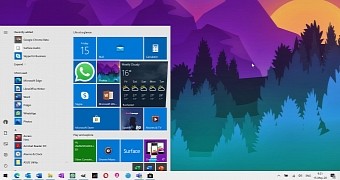The debut of Windows 10 version 2004, or May 2020 Update, will mark one important milestone for the future of Windows in general.
Beginning with this release, Microsoft will no longer provide 32-bit images to OEMs, which means that slowly but surely, the company is focusing entirely on 64-bit.
But before delving into the details, let’s have a look at the official announcement in this regard:
“Beginning with Windows 10, version 2004, all new Windows 10 systems will be required to use 64-bit builds and Microsoft will no longer release 32-bit builds for OEM distribution. This does not impact 32-bit customer systems that are manufactured with earlier versions of Windows 10; Microsoft remains committed to providing feature and security updates on these devices, including continued 32-bit media availability in non-OEM channels to support various upgrade installation scenarios.”
There are basically three things that you need to know about the end of Windows on 32-bit.
First and foremost, the announcement only concerns OEMs. In other words, Microsoft will no longer provide OEMs with 32-bit images of Windows 10 to install them on new PCs.
Microsoft typically ships OS images to PC makers whenever a new feature update for the operating system is finalized, thus giving them more time to prepare for the launch. This means these OEMs pre-install the latest OS on their devices, so when they go on sale, customers receive the latest feature update out of the box. So following this change, 32-bit images would no longer be provided to OEMs, which means they must stick with 64-bit going forward.
Then, your 32-bit Windows 10 device will continue to work just fine. Since the change only concerns OEMs, all existing installations of Windows 10 on 32-bit devices are not affected, as everything will continue to work just like before.
In other words, your computer will still receive updates and security patches even if you’re running the 32-bit version of Windows 10. Nothing changes for consumers right now.
But third of all, you should still upgrade to 64-bit going forward. And this happens for one very simple reason: by giving up on 32-bit images for OEMs, Microsoft is essentially making the first major step before it’s phasing out 32-bit Windows completely.
When the Windows 10 version that you are running reaches the end of support, no other 32-bit versions would be available, meaning that you need to upgrade to 64-bit to continue receiving updates.
According to Microsoft’s servicing schedule, Windows 10 version 1909, or the November 2019 Update, which is the latest version right now with a 32-bit release, will reach the end of support on May 11, 2021. The Enterprise and Education editions will be pulled in May 2020.
So sooner or later, everybody would have to move to 64-bit Windows. The good news is that the number of customers affected by this announcement is likely very small, as Windows 10 32-bit is believed to have a rather limited userbase.
Windows 10 version 2004 is expected to launch as soon as this month, as the RTM build has already been signed off. According to the existing speculation, the rollout will kick off in the last week of the month, but anyone who wants to try it out right now can head over to the Windows Insider program and enroll in the Release Preview ring.
Testers in this ring have already been offered the final build of the Windows 10 May 2020 Update, with Microsoft only shipping small refinements every now and then before the release to production devices.

 14 DAY TRIAL //
14 DAY TRIAL //